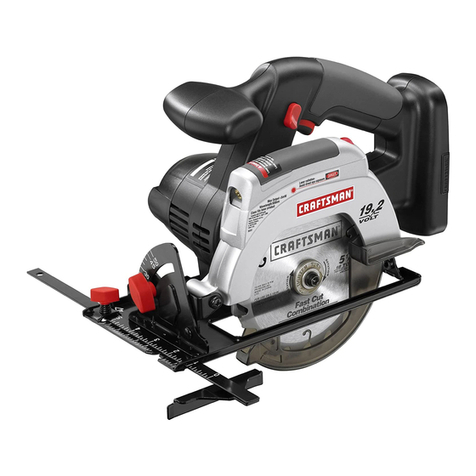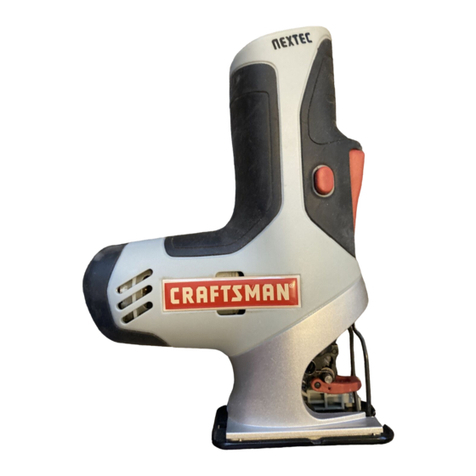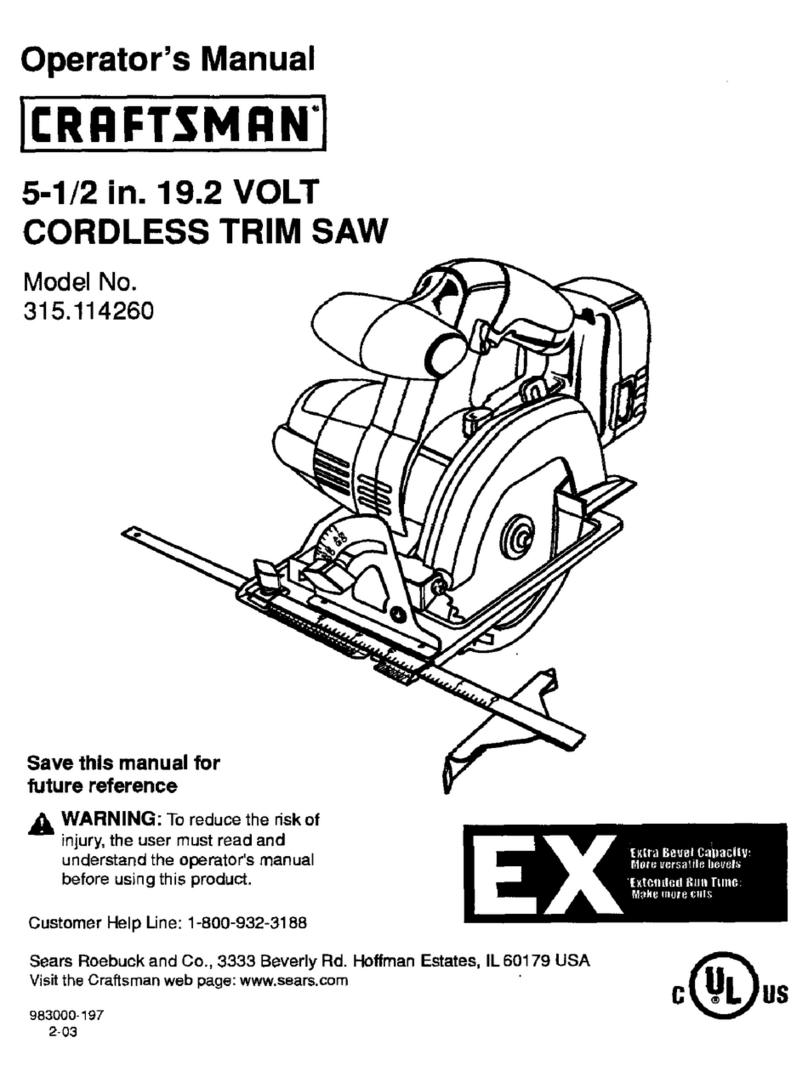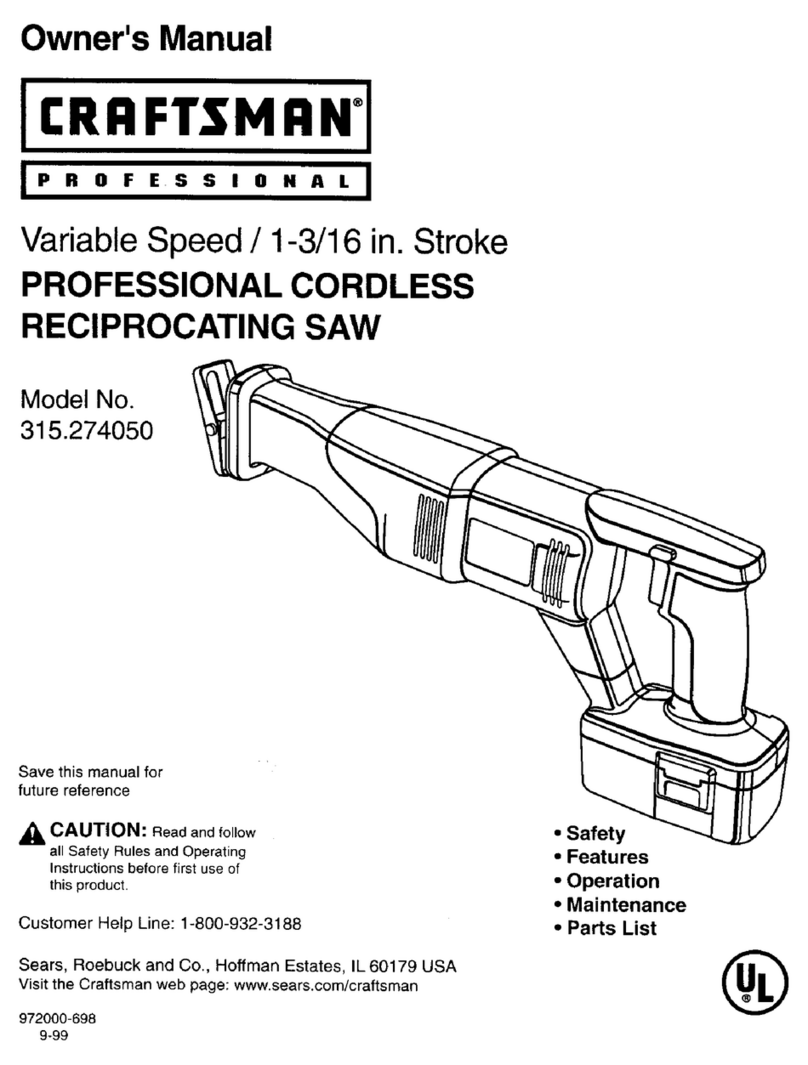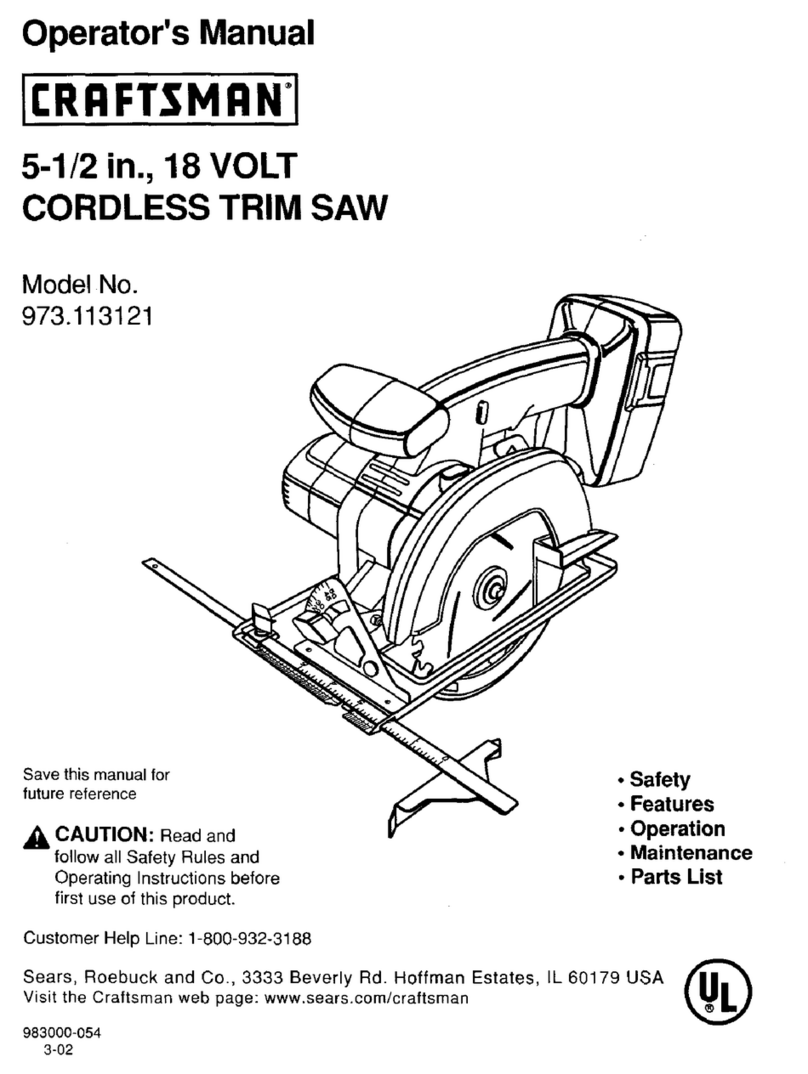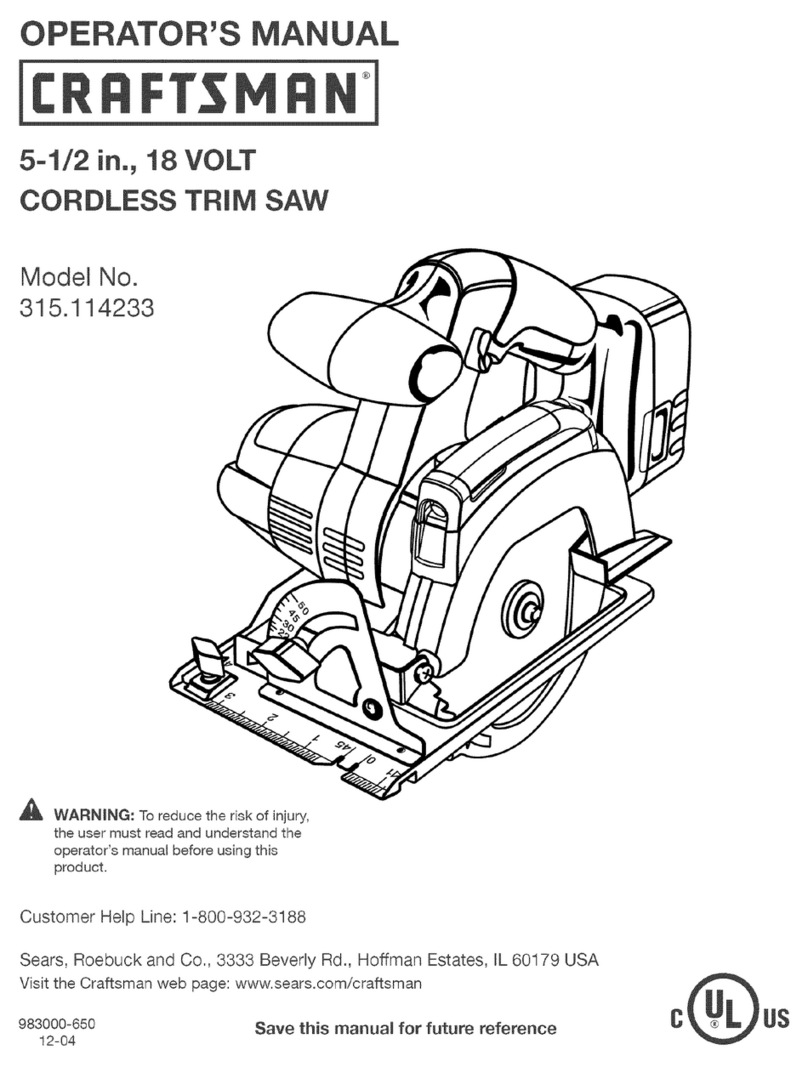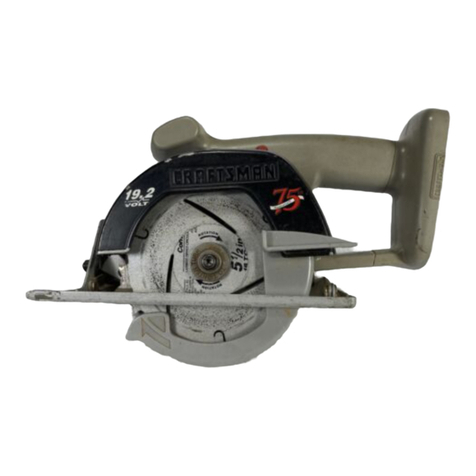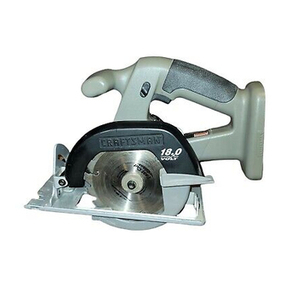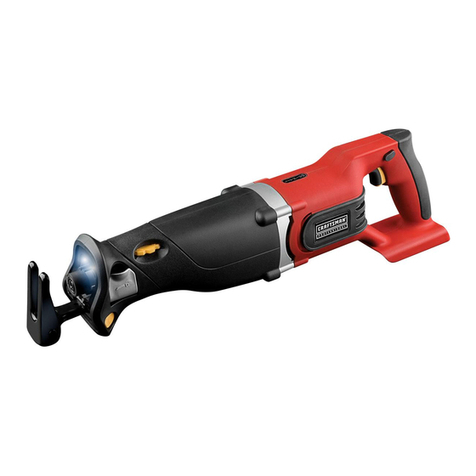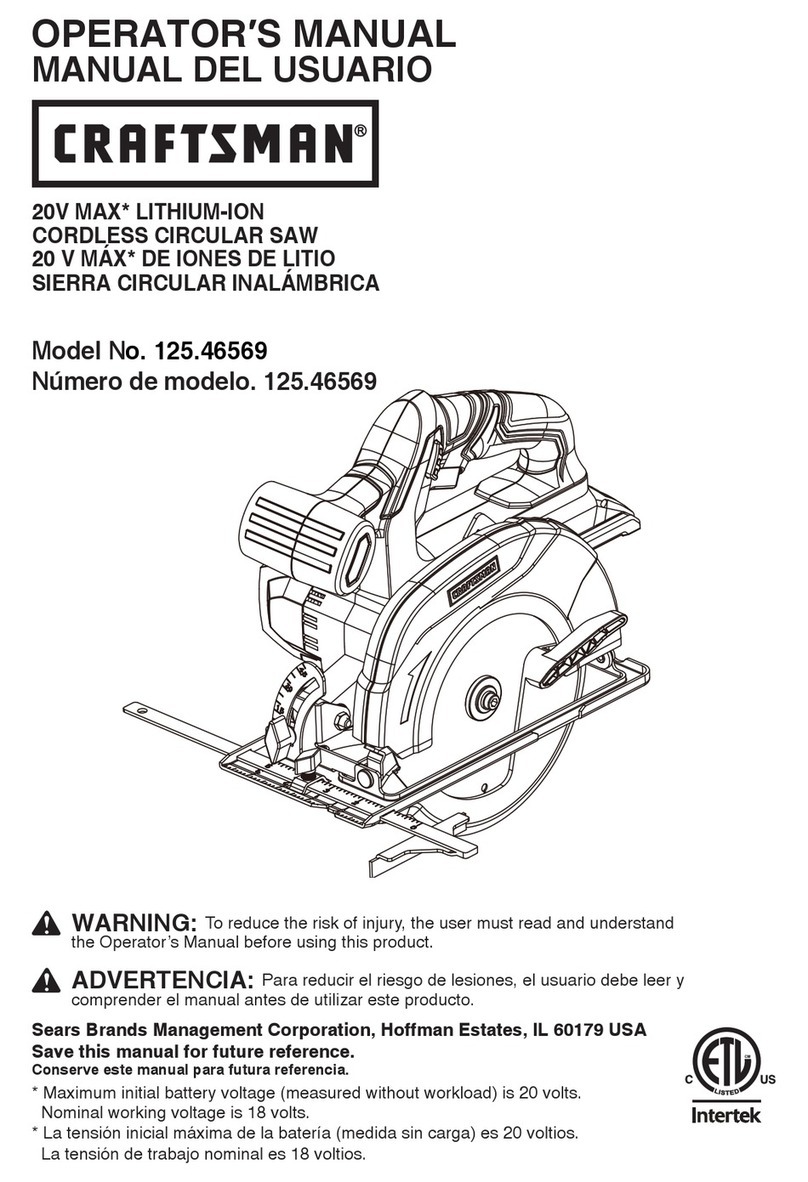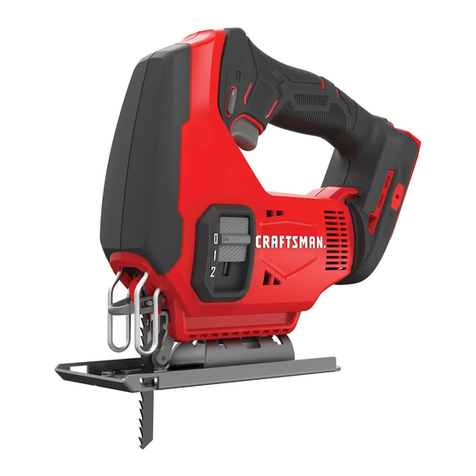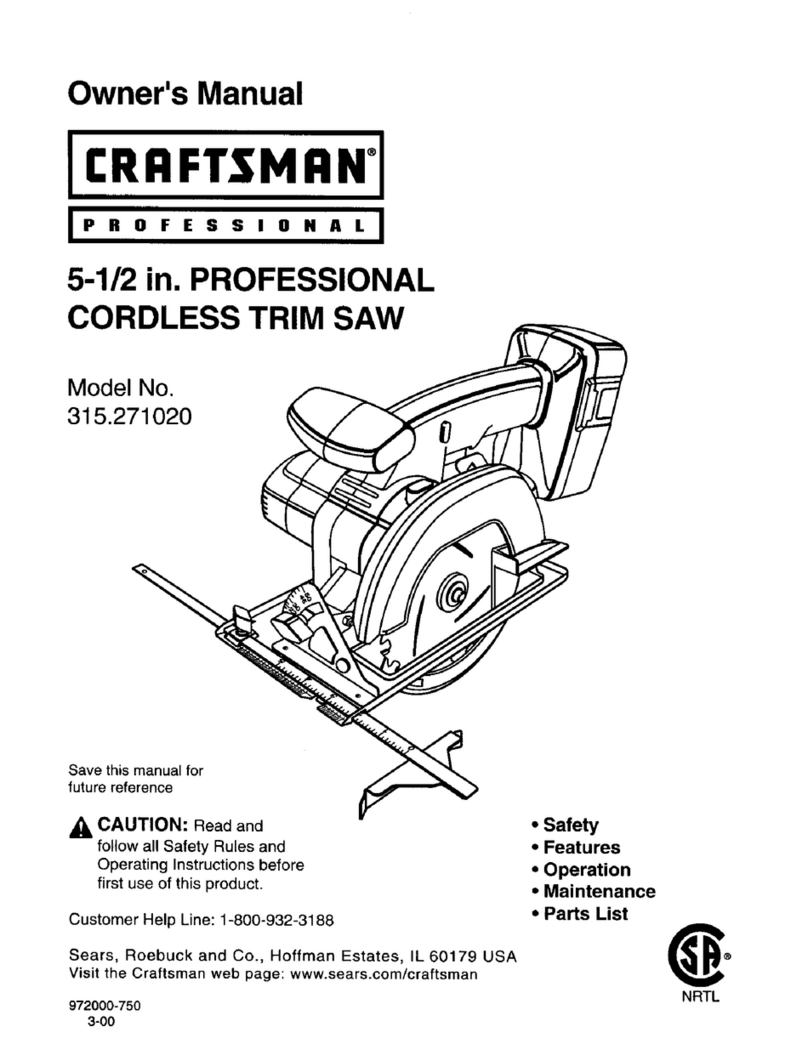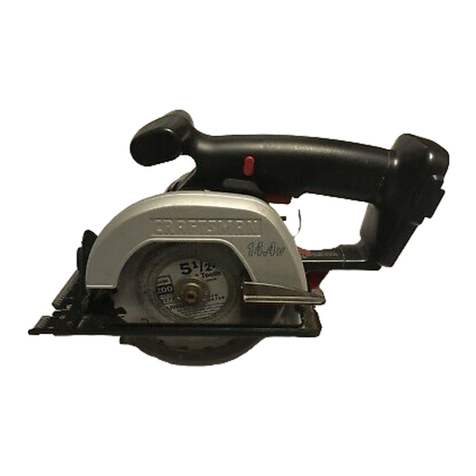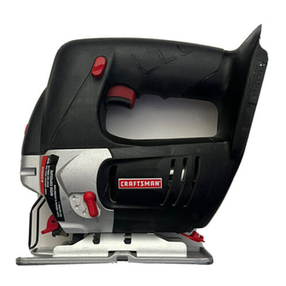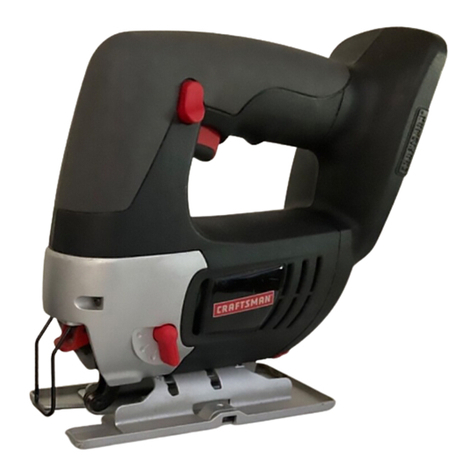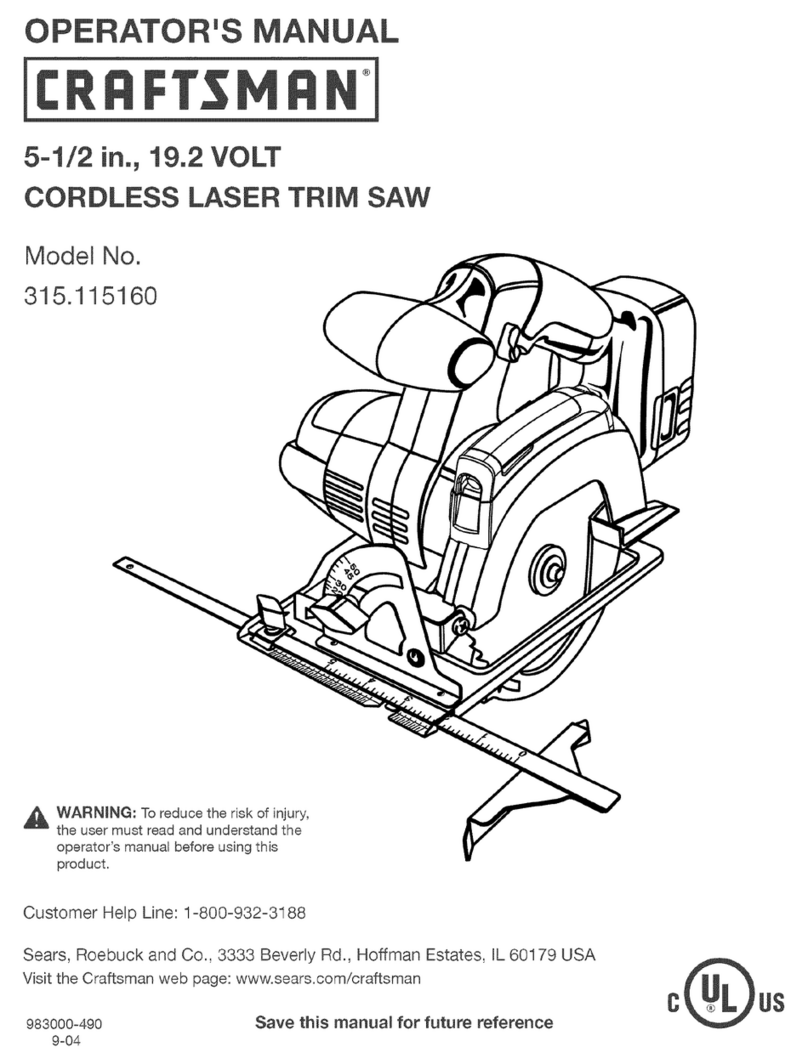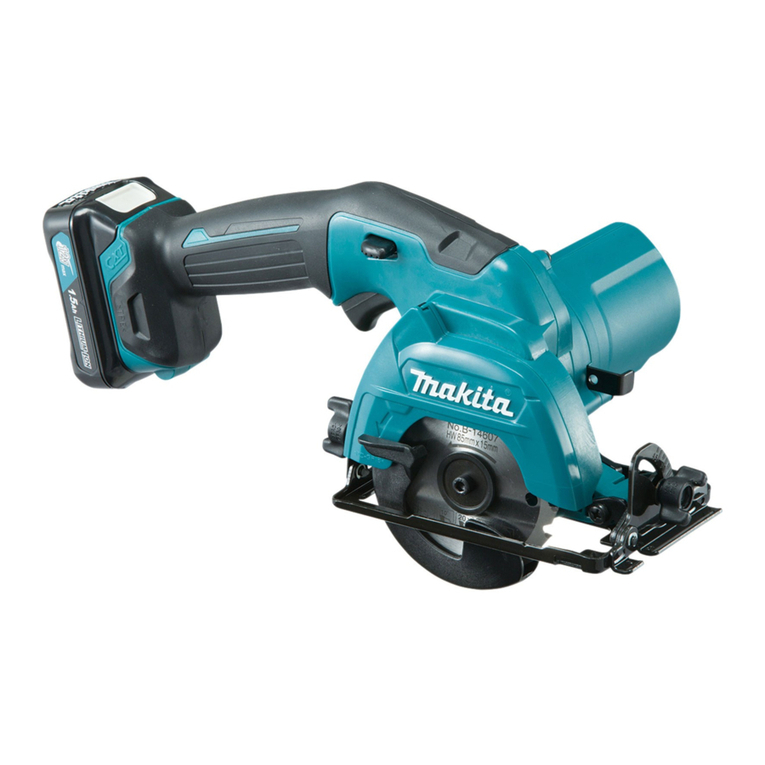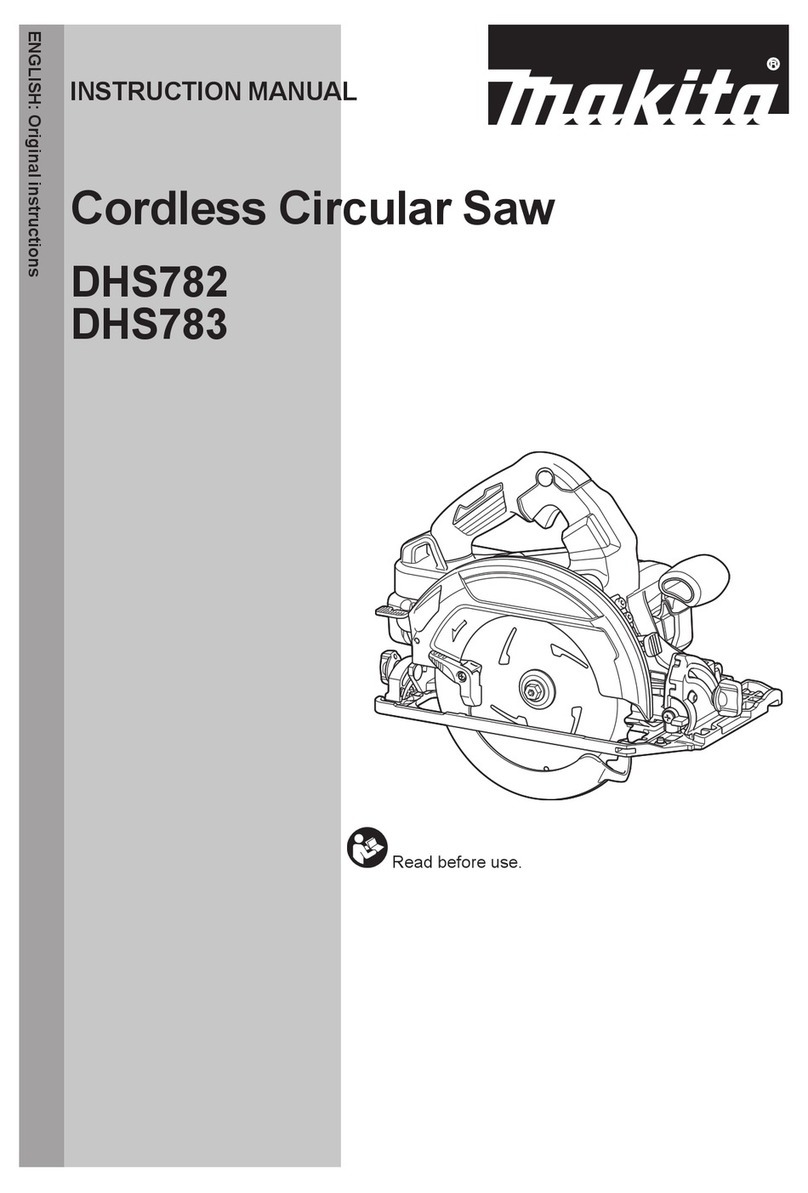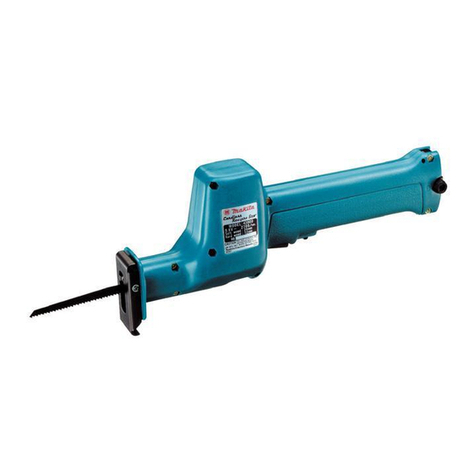RULES FOR SAFE OPERATION (Continued)
MAINTAIN TOOLS WITH CARE. Keep tools
sharp at all times, and clean for best and safest
performance. Follow instructions for lubricating
and changing accessories.
REMOVE ADJUSTING KEYS AND
WRENCHES. Form habit of checking to see that
keys and adjusting wrenches are removed from
tool before turning it on.
NEVER USE IN AN EXPLOSIVE ATMO-
SPHERE. Normal sparking of the motor could
ignite flammable liquids, gases, or fumes.
KEEP HANDLES DRY, CLEAN, AND FREE
FROM OIL AND GREASE. Always use a clean
cloth when cleaning. Never use brake fluids,
gasoline, petroleum-based products or any
strong solvents to clean your tool.
STAY ALERT. Watch what you are doing and
use common sense. Do not operate tool when
you are tired. Do not rush.
CHECK DAMAGED PARTS. Before further use
of the tool, a guard or ether part that is damaged
should be carefully checked to determine that it
will operate properly and perform its intended
function. Check for alignment of moving parts,
binding of moving parts, breakage of parts,
mounting, and any other conditions that may
affect its operation. A guard or other part that is •
damaged should be properly repaired or
replaced by an authorized service center unless
indicated elsewhere in this instruction manual.
•DO NOT USE TOOL IF SWITCH DOES NOT
TURN IT ON AND OFF. Have defective switches
replaced by an authorized service center.
•DRUGS, ALCOHOL, MEDICATION. Do net
operate tool while under the influence of drugs,
alcohol, or any medication.
making adjustments to it, or when changing
accessories.
USE ONLY THE CHARGER PROVIDED WITH
YOUR BATTERY TOOL. Do not substitute any
other charger. Use of another charger could
cause batteries to explode causing possible
serious injury.
DO NOT PLACE BATTERY TOOLS OR THEIR
BATTERIES NEAR FIRE OR HEAT. They may
explode.
DO NOT CHARGE BATTERY TOOL IN A
DAMP OR WET LOCATION.
Your battery tool should be charged in a location
where the temperature is more than 50°F but
less than 100°F.
Under extreme usage or temperature conditions,
battery leakage may occur. If liquid comes in
contact with your skin, wash immediately with
soap and water, then neutralize with lemon juice
or vinegar. If liquid gets in your eyes, flush them
with clean water for at least 10 minutes, then
seek immediate medical attention.
If carrying your battery tool at your side, make
sure it is not running and your finger is not on the
switch. Avoid accidental starting.
SECURE WORK before applying power. NEVER
hold werkpiece in your hand or across your legs.
WHEN SERVICING USE ONLY IDENTICAL
CRAFTSMAN REPLACEMENT PARTS.
IMPORTANT SAFETY INSTRUCTIONS FOR
CHARGER
CUTTING INTO ELECTRICAL WIRING IN
WALLS AND FLOORS CAN CAUSE THE •
BLADE AND METAL PARTS TO BECOME
ELECTRICALLY LIVE. Do not touch metal parts
when cutting into walls and floors; grasp only the
insulated handle(s) provided on the tool. Make
sure hidden electrical wiring, water pipes, and 4Hk
mechanical hazards are not in the blade path
when cutting into a wall or floor.
•INSPECT FOR and remove all nails from lumber
before cutting.
IMPORTANT SAFETY RULES FOR BATTERY
TOOLS
Battery tools do not have to be plugged into an
electrical outlet; therefore, they are always in an
operating condition. Be aware of possible
hazards when carrying your battery tool, when
SAVE THESE INSTRUCTIONS. This manual
contains important safety and operating
instructions for battery charger item number
9-11059 (981831-002).
Before using battery charger, read all instructions
and cautionary markings in this manual, on
battery charger, and product using battery
charger.
WARNING: To reduce risk of injury, charge
only nickel-cadmium type rechargeable batteries.
Other types of batteries may burst causing
personal injury and damage.
Do not expose charger to rain or snow.
Use of an attachment not recommended or sold
by the battery charger manufacturer may result
in a risk of fire, electric shock, or injury to
persons.
• To reduce risk of damage to charger body and
cord, pull by charger plug rather than cord when
disconnecting charger.
4


